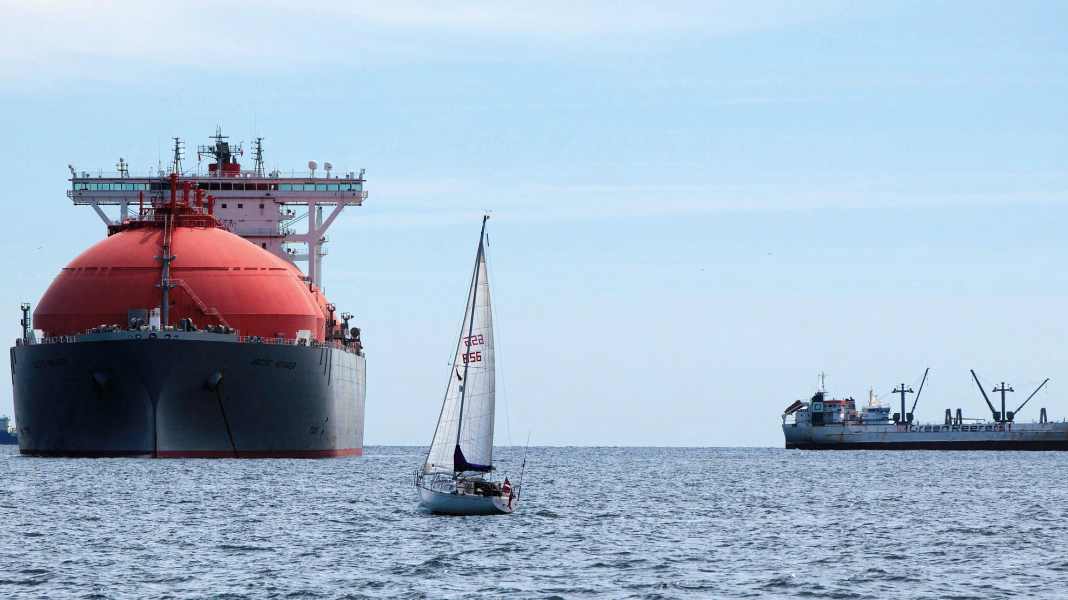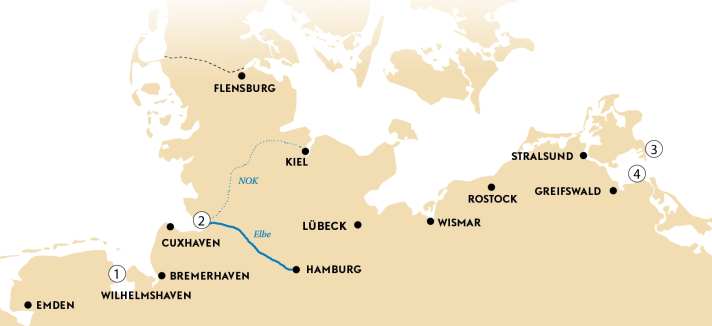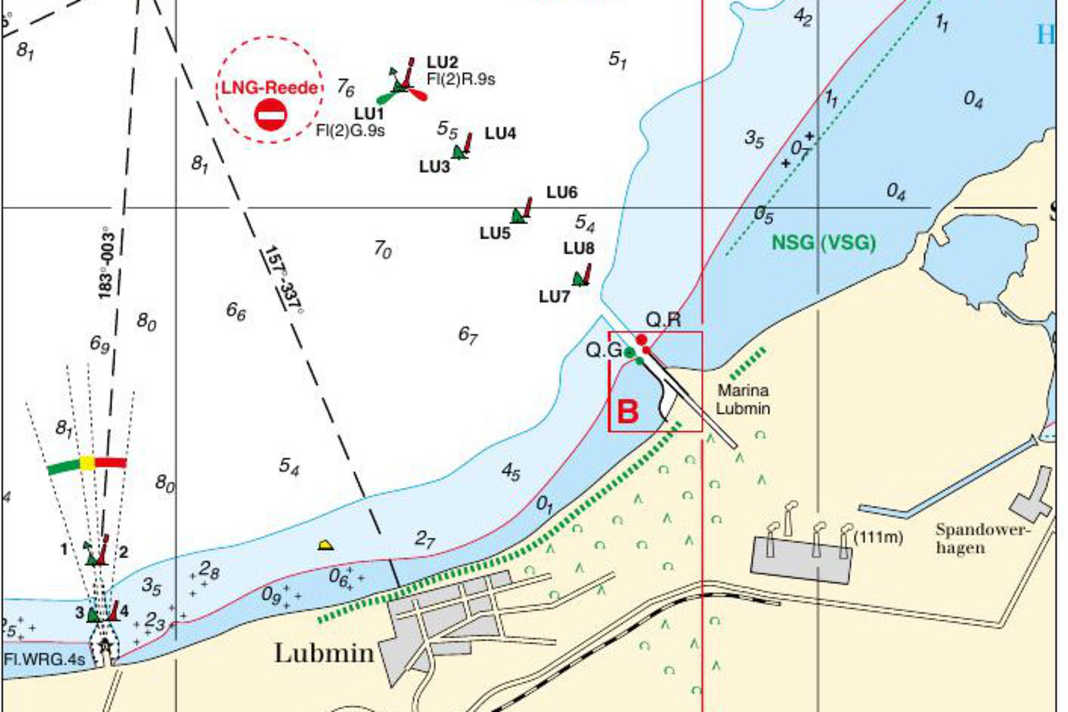LNG terminals: An overview of the rules for sailors at the new locations

Several sailors are likely to be looking anxiously through their letterboxes in the near future. They are facing severe fines of up to 450 euros because they sailed too close to an LNG tanker in mid-May, which was moored in the newly established LNG roadstead off Rügen. The associated distance requirement has been in force since 8 May. However, not all sailors are aware of it.
The Sassnitz Water Police Inspectorate, which is responsible for the sea area in question, has therefore publicised the approach ban issued by the Baltic Sea Waterways and Shipping Office itself once again. The problem: different distance rules apply at all LNG terminal locations along the German North Sea and Baltic Sea coasts and on the Elbe. This inevitably causes confusion.
Different requirements for LNG terminals
The reason for this is that the responsible waterway and shipping authorities must ensure the operational safety of liquid gas transshipment on the one hand. On the other hand, the restrictions for other shipping should be kept as low as possible. And in some places, the conditions do not even allow large areas around the terminals or anchorages to be closed. A difficult balancing act for the authorities. So far, there are terminals in Wilhelmshaven, Brunsbüttel and Lubmin as well as anchorages east of Rügen and in the south of the Greifswalder Bodden. There was a restricted area in Wilhelmshaven during the construction phase, which was lifted again at the end of April and replaced by a tanker protection zone. This means that other ships must keep 300 metres away from the tankers moored at the terminal.
The situation is similar in Brunsbüttel. However, due to the narrower Elbe navigation channel, it is only 250 metres there. The exclusion zones are larger at the anchorages. They also refer to the ships anchored there, not to the boundaries of the roadstead! When passing the terminals, there is also a listening watch on VHF channel 68 for boats equipped with radios. The traffic centres also regularly announce the prohibition of navigation via VHF radio. And it is monitored by the traffic centres and by a guard ship at sea.
The distance rules to LNG facilities at a glance
- LNG terminal Wilhelmshaven/Jadebusen: 300 m distance in the direction of the fairway
- Brunsbüttel/Elbe LNG terminal: 250 m distance in the direction of the fairway
- Nordperd roadstead off Rügen:1 nm away from anchored tankers
- Lubmin roadstead in the Greifswald Bodden:0.5 nm distance to anchored tankers

The chart sections in the Delius Klasing Verlag recreational craft chart set for the LNG anchorages



3 questions for Claudia Thoma, Directorate-General for Waterways and Shipping
Mrs Thoma, why are there different distance regulations to the LNG ports and terminals?
Claudia Thoma:In the case of floating LNG terminals with regasification facilities such as those in Wilhelmshaven, Brunsbüttel or Lubmin, specific hazard areas are identified with the help of expert reports on the spread of the gas in the event of an unforeseen cargo leak and corresponding safety zones are set up around the facilities.
And what about the roads?
The safety zones at the Lubmin and Nordperd roadstead were defined by the Federal Waterways and Shipping Administration in order to separate stationary traffic from moving ships. The different distances here result, for example, from the type and size of the ships as well as possible transshipment from ship to ship.
Why are there distance rules for LNG ships per se? Are they dangerous?
Recreational craft must always keep a safe distance from ships transporting dangerous goods, including LNG tankers.
